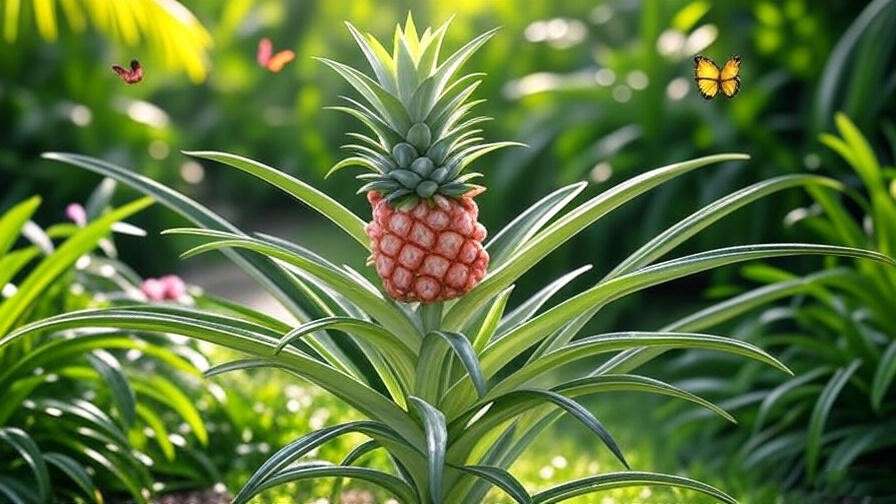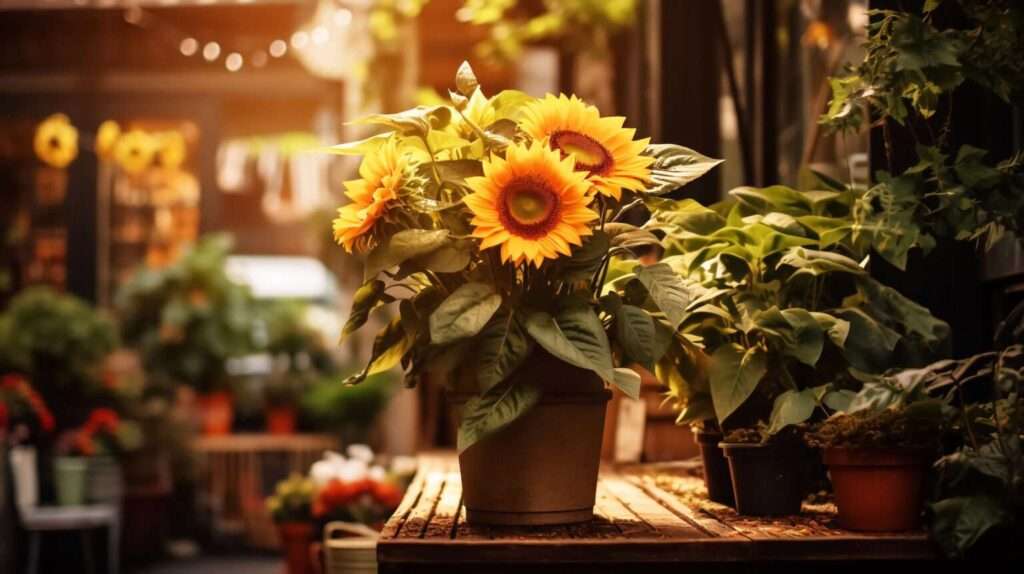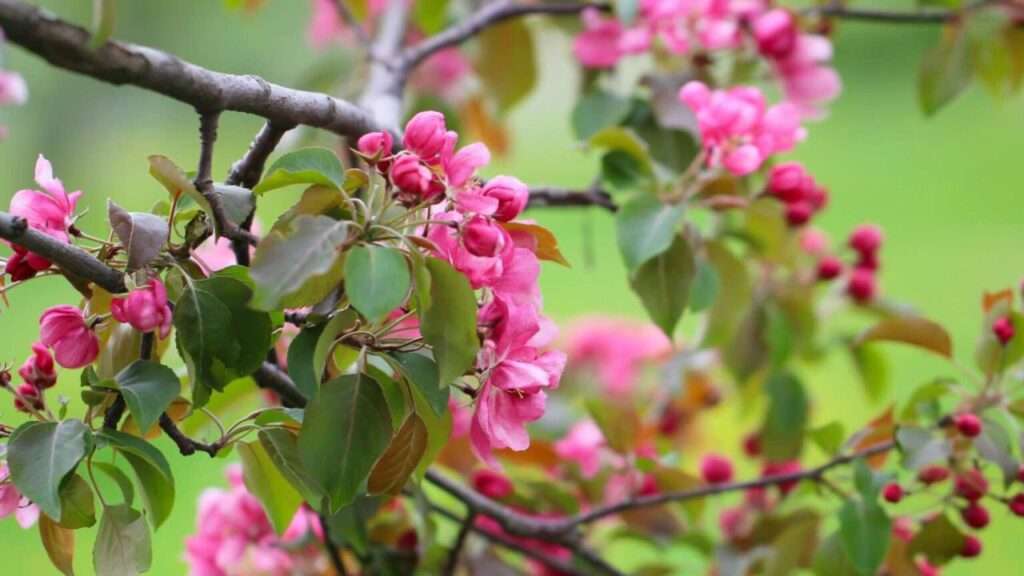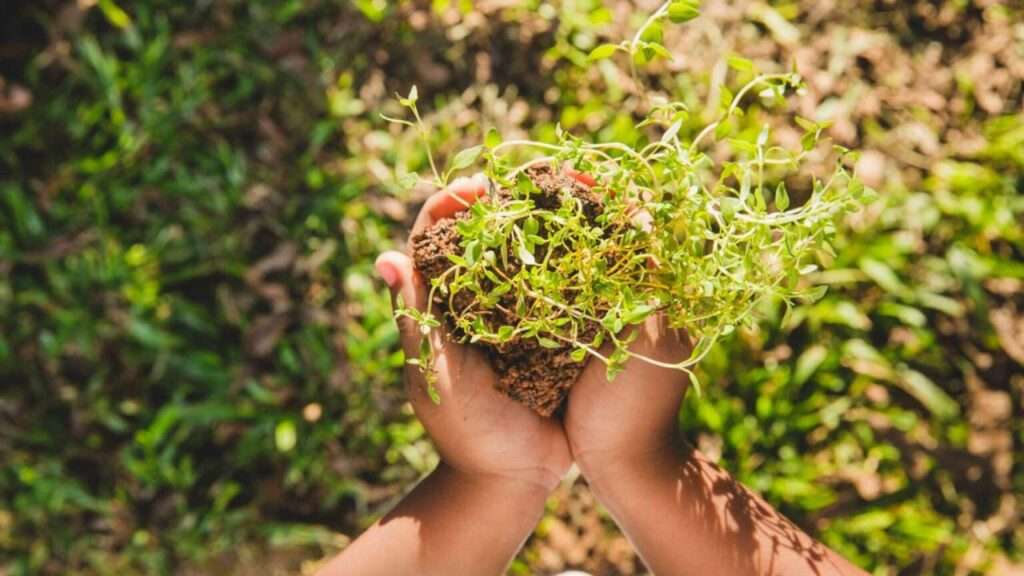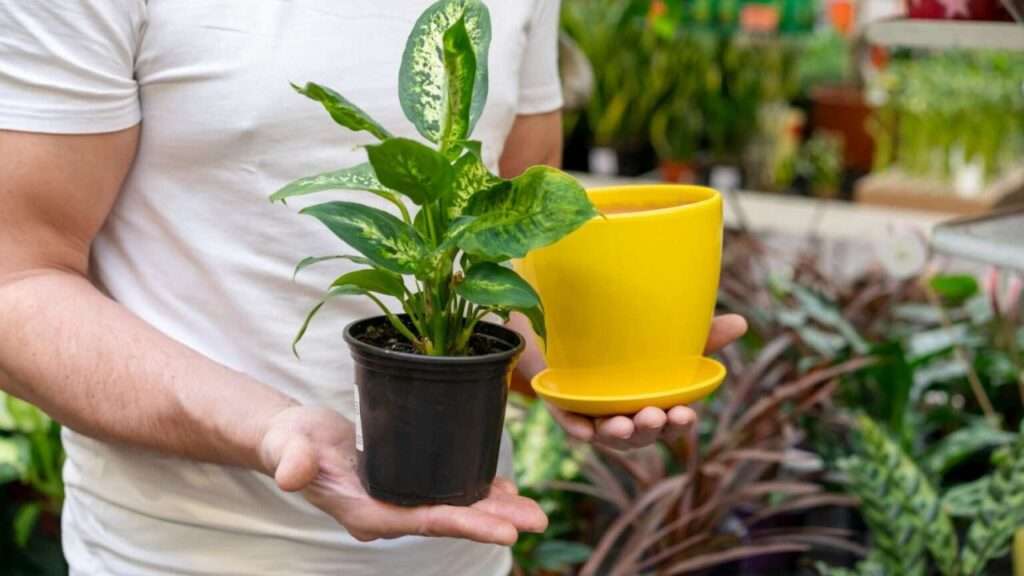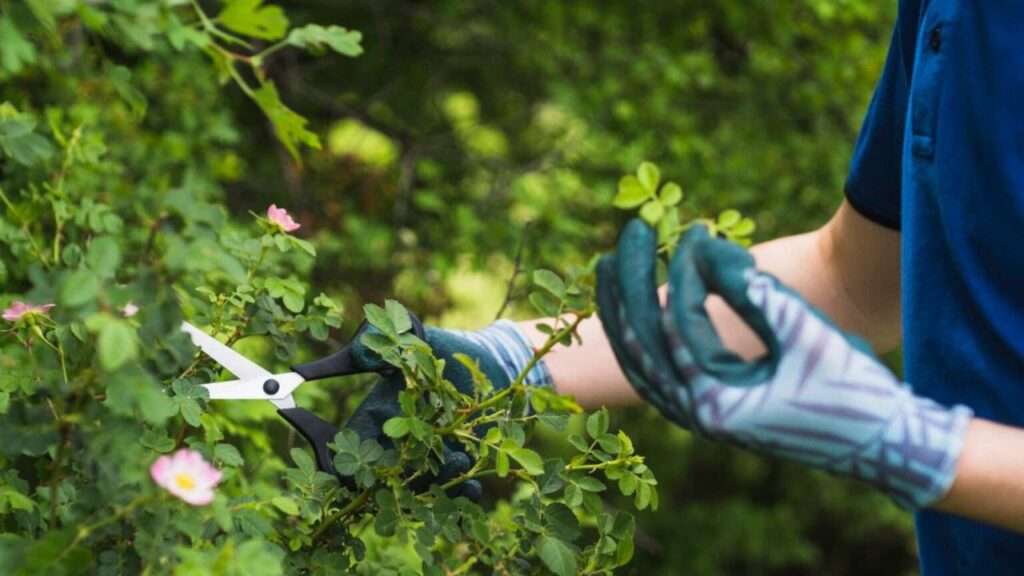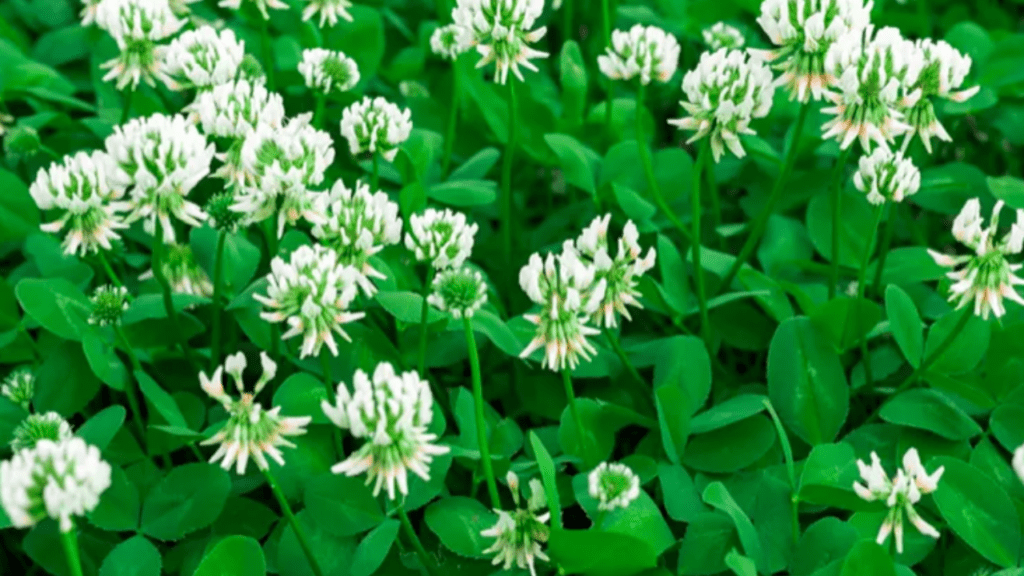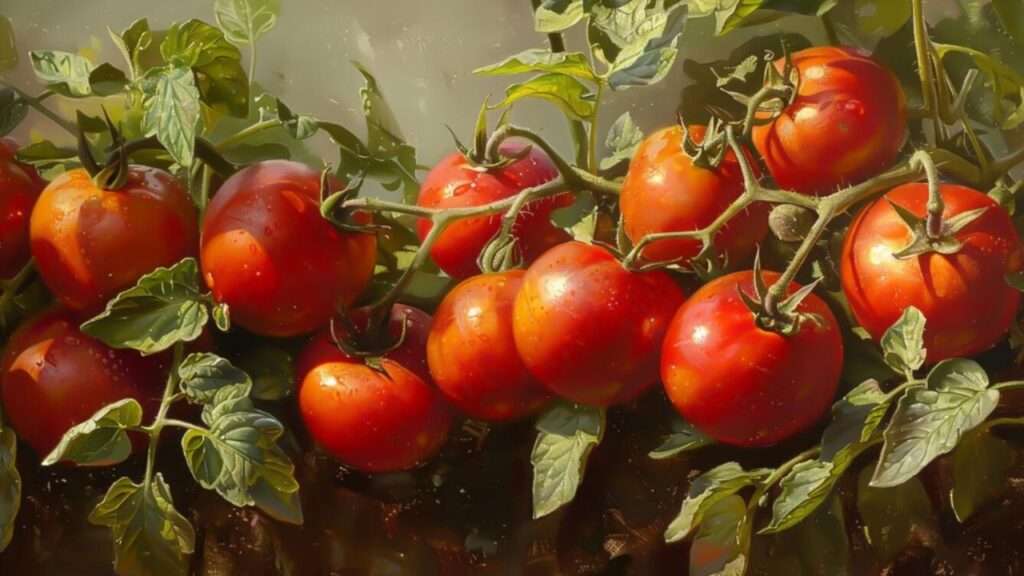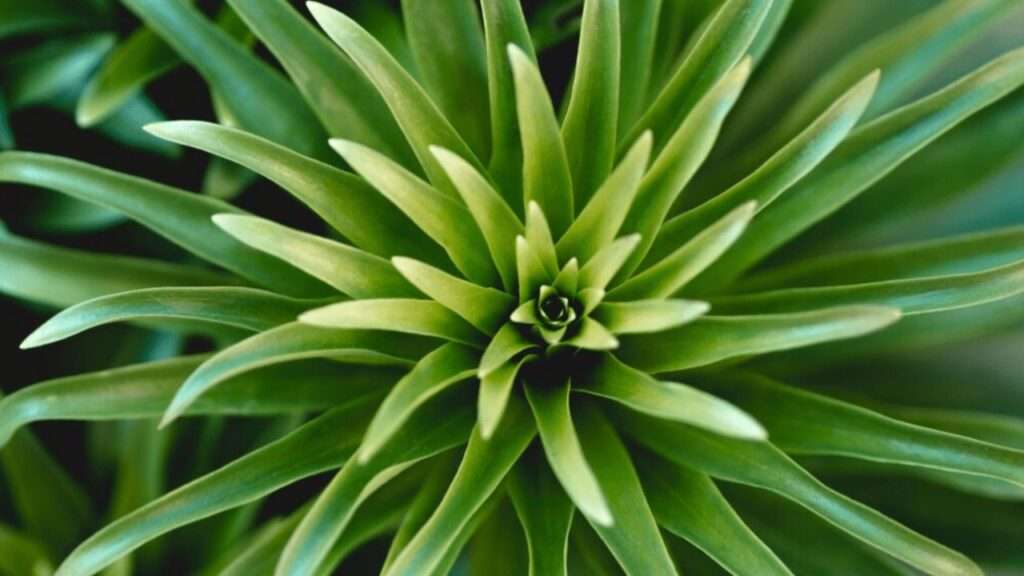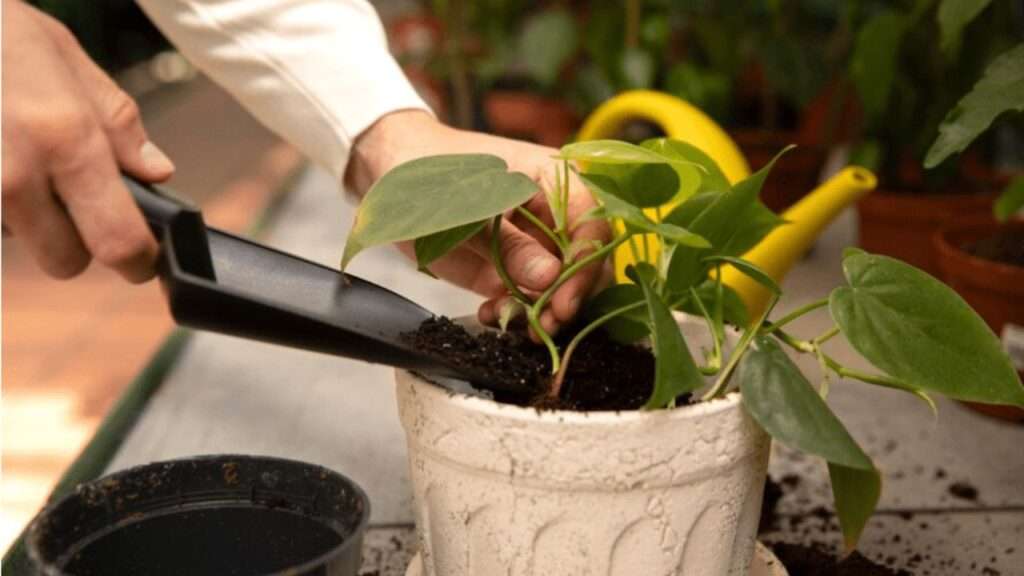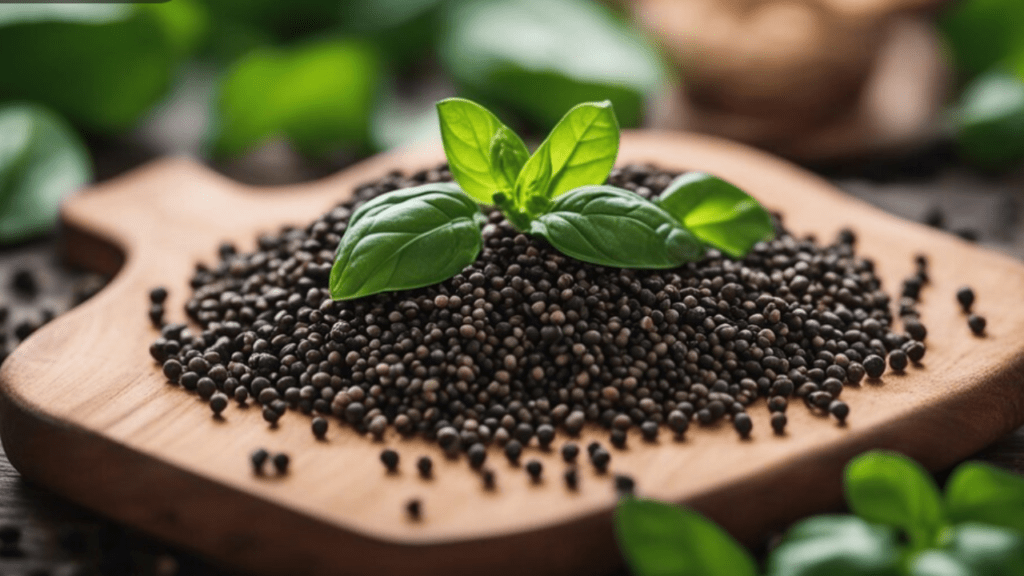Imagine transforming your garden into a tropical paradise with the vibrant, watermelon-striped foliage of the watermelon pineapple plant! 🌴 This stunning cultivar, known scientifically as Ananas comosus var. erectifolius, is a must-have for plant enthusiasts seeking low-maintenance beauty with exotic flair. Whether you’re a seasoned gardener or a beginner, this guide will equip you with expert-backed strategies to grow and care for watermelon pineapple plants successfully. As a horticulturist with over a decade of experience in tropical plant cultivation, I’ve distilled insights from botanical research and hands-on practice to help you create a thriving tropical garden. From planting to troubleshooting, you’ll learn everything needed to nurture this unique plant. Let’s dive in! 🌿
Understanding the Watermelon Pineapple Plant 🌿
What Is a Watermelon Pineapple Plant?
The watermelon pineapple plant, a striking member of the Bromeliaceae family, is a cultivar of the pineapple species (Ananas comosus var. erectifolius). Its long, sword-like leaves boast green and pink stripes, reminiscent of a watermelon’s rind, making it a standout in any garden or indoor space. Native to South America, particularly Brazil and Paraguay, this ornamental plant is prized for its compact growth and adaptability. Unlike its edible pineapple cousin, the watermelon pineapple is primarily grown for its aesthetic appeal, though it may produce small, decorative fruit under optimal conditions.
Why Grow Watermelon Pineapple Plants?
Why choose this plant for your garden? Its vibrant foliage adds a tropical vibe to landscapes, patios, or indoor settings. It’s low-maintenance, making it ideal for busy gardeners or those new to plant care. Plus, its versatility allows it to thrive in USDA zones 9-11 outdoors or as a container plant in cooler climates. Whether you’re designing a tropical oasis or seeking a unique houseplant, the watermelon pineapple delivers beauty with minimal effort. 🌺
Getting Started: Planting Your Watermelon Pineapple 🌱
Choosing the Right Location
To ensure your watermelon pineapple thrives, location is key. These plants prefer full sun to partial shade, requiring 4-6 hours of sunlight daily. In tropical or subtropical climates (USDA zones 9-11), they flourish in garden beds. For colder regions, container gardening allows you to bring the plant indoors during winter. Choose a spot with well-draining, slightly acidic soil (pH 5.5-6.5). Poor drainage can lead to root rot, so avoid low-lying areas where water pools. For indoor plants, place near a south-facing window or supplement with grow lights.
Propagation Methods
Watermelon pineapple plants are easy to propagate, offering two primary methods:
- From Pups: Mature plants produce offsets, or “pups,” at their base. To propagate, gently separate a pup with a sharp, sterilized knife once it’s about one-third the size of the parent plant. Plant it in a well-draining potting mix and keep it moist until roots establish.
- From Tops: Like edible pineapples, you can root the crown of a watermelon pineapple. Twist off the leafy top, remove lower leaves, and place it in water or directly into soil. Roots typically form within 2-4 weeks.
Expert Tip: Always sterilize cutting tools with rubbing alcohol to prevent fungal infections during propagation. 🧼
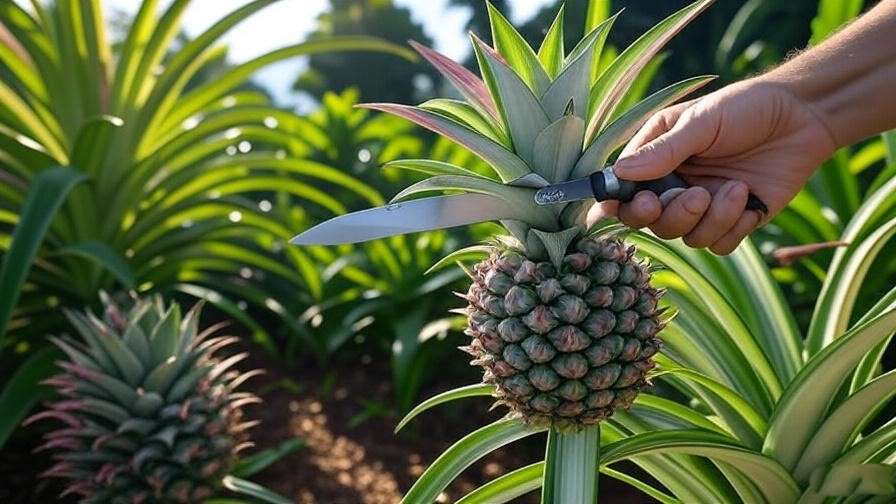
Planting Step-by-Step
- Prepare the Soil: Use a mix of peat, perlite, and sand for optimal drainage. For garden beds, amend soil with organic matter to achieve a pH of 5.5-6.5.
- Planting Depth: Place the pup or crown shallowly in the soil, ensuring the base is just covered. Space plants 12-18 inches apart in garden beds.
- Initial Watering: Water lightly after planting to settle the soil, avoiding waterlogged conditions.
- Stabilize: For top-heavy crowns, use stakes to keep them upright until roots develop.
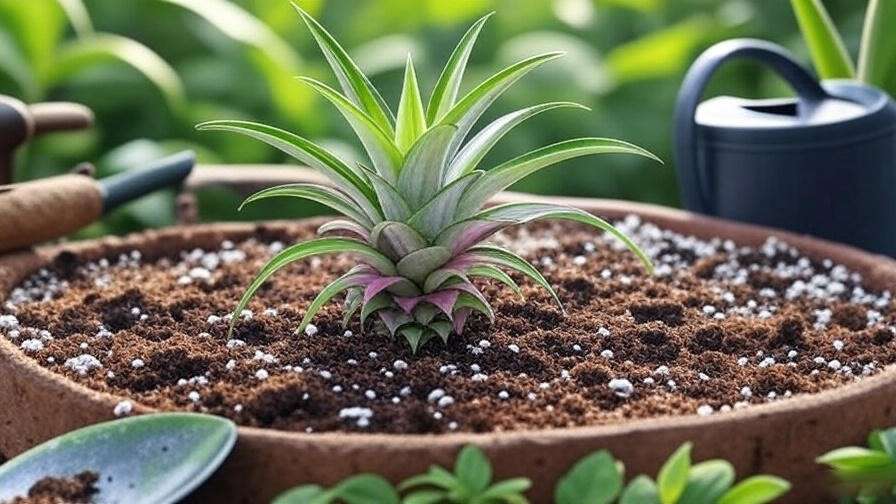
Essential Care Tips for Thriving Watermelon Pineapple Plants 💧
Watering Needs
Watermelon pineapples are drought-tolerant but require consistent moisture for optimal growth. Water sparingly, allowing the top inch of soil to dry out between sessions. In tropical climates, weekly watering is often sufficient, while indoor plants may need less frequent hydration. Overwatering is a common mistake—watch for yellowing leaves or soggy soil, which indicate root rot. Conversely, wilting or curling leaves suggest underwatering. Adjust watering based on season: reduce in winter when growth slows. 💦
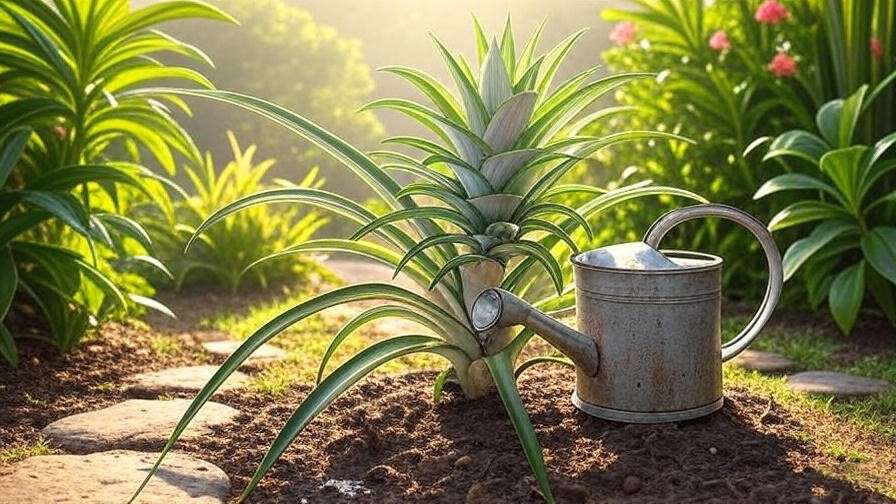
Fertilizing for Optimal Growth
To promote lush foliage, fertilize monthly during the growing season (spring and summer) with a balanced, water-soluble fertilizer (e.g., 10-10-10). Dilute to half-strength to avoid burning the roots. Organic options like compost tea or fish emulsion work well for eco-conscious gardeners. Avoid over-fertilizing, as excess nutrients can cause leaf tip burn. In fall and winter, pause fertilization to align with the plant’s dormant phase. 🌱
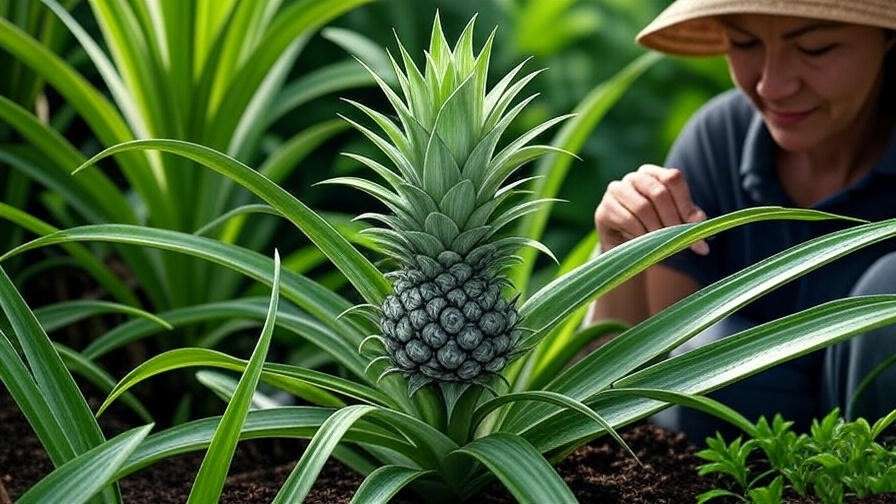
Light and Temperature Requirements
Watermelon pineapples thrive in warm temperatures (65-85°F or 18-29°C) and bright light. Outdoors, they tolerate full sun but appreciate afternoon shade in scorching climates. Indoors, provide bright, indirect light or supplement with a full-spectrum grow light (12-14 hours daily). Protect from frost, as temperatures below 50°F (10°C) can damage the plant. In colder regions, move container plants indoors during winter or cover outdoor plants with frost blankets. 🌞
Pruning and Maintenance
Minimal pruning is needed, but regular maintenance keeps your plant healthy. Remove dead or yellowing leaves at the base with clean shears to improve airflow and appearance. If pups crowd the parent plant, separate them for propagation or to maintain a tidy look. Inspect regularly for pests like mealybugs or spider mites, especially in humid conditions. A quick wipe with a damp cloth can prevent infestations. ✂️
Troubleshooting Common Issues 🐛
Yellowing or Browning Leaves
Yellowing leaves often signal overwatering or poor drainage. Check soil moisture and ensure pots have drainage holes. Browning leaf tips may indicate low humidity or nutrient deficiency. Test soil pH and adjust with sulfur if too alkaline. Apply a balanced fertilizer to correct deficiencies. If issues persist, repot in fresh, well-draining soil. 🩺
Pest and Disease Management
Common pests include mealybugs, aphids, and scale insects, which cluster on leaves or stems. Treat with neem oil or insecticidal soap, applied weekly until pests are gone. Fungal issues like root rot arise from overwatering. Improve drainage and reduce watering frequency to prevent this. Good airflow around plants also discourages fungal growth. 🕷️
Slow Growth or Lack of Vibrant Color
If your plant grows slowly or loses its vibrant pink stripes, it may lack light or nutrients. Relocate to a brighter spot or increase light exposure. Test soil pH to ensure it’s within the 5.5-6.5 range. A lack of nitrogen or potassium can dull foliage—apply a balanced fertilizer to restore vibrancy. 🌈
Advanced Tips for Expert Gardeners 🌟
Encouraging Fruit Production
While watermelon pineapple plants are primarily ornamental, they can produce small, decorative pineapples under the right conditions. Fruiting typically occurs after 2-3 years of consistent care in warm, sunny environments. To encourage fruiting, maintain temperatures above 70°F (21°C) and provide ample sunlight. For indoor or greenhouse plants, hand-pollination may be necessary. Use a small brush to transfer pollen from the flower’s stamens to the pistil during blooming. Research from tropical agriculture journals, such as studies published by the University of Florida’s Institute of Food and Agricultural Sciences, suggests that stable humidity (50-60%) enhances fruit development. Patience is key—fruiting is a bonus, not a guarantee, with this cultivar. 🍍
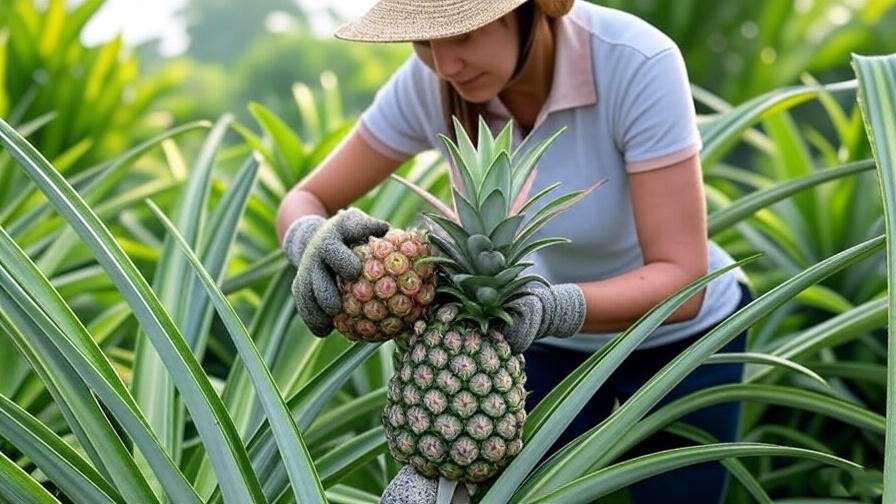
Companion Planting
Watermelon pineapples pair beautifully with companion plants that enhance their health and aesthetic. Marigolds and basil deter pests like aphids, while their vibrant colors complement the plant’s striped foliage. Avoid water-loving plants like ferns, which require moist soil that could harm pineapple roots. For garden design, consider pairing with other drought-tolerant tropicals like agave or yucca for a cohesive look. In containers, mix with trailing plants like creeping thyme for visual contrast. These combinations create a stunning tropical display while promoting plant health. 🌼
Overwintering in Colder Climates
In regions below USDA zone 9, overwintering is essential to protect watermelon pineapples from frost. For container plants, move indoors to a bright, warm spot (65-75°F or 18-24°C) before temperatures drop below 50°F (10°C). Maintain humidity with a pebble tray or misting, as indoor heating can dry the air. For outdoor plants in mild climates, use frost blankets or mulch to insulate roots. A case study from a gardener in Zone 8 shared on a horticulture forum reported success overwintering by wrapping plants in burlap and moving them to a sheltered patio. These strategies ensure year-round survival. ❄️
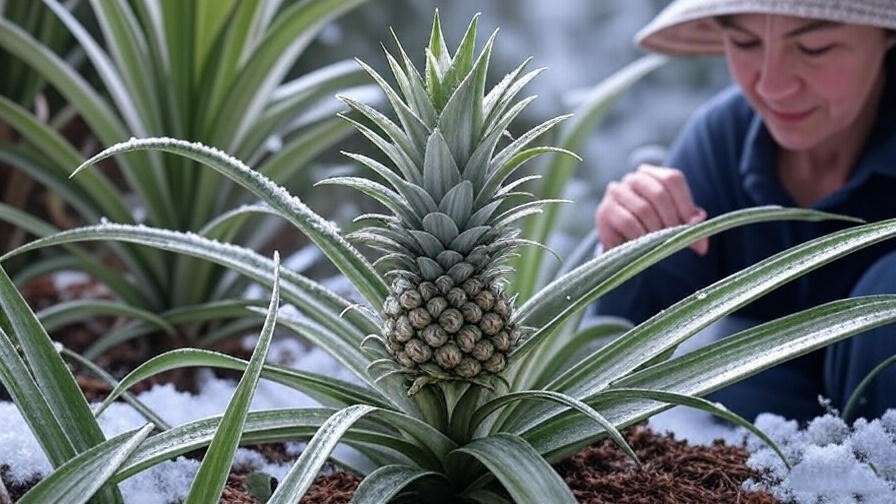
Creative Uses for Watermelon Pineapple Plants in Your Garden 🎨
Watermelon pineapple plants are versatile showstoppers. In landscaping, use them as focal points in tropical garden beds, surrounded by low-growing groundcovers like mondo grass. Their compact size (2-3 feet tall) makes them ideal for borders or rock gardens. In containers, they shine on patios or balconies, styled with colorful ceramic pots for a modern vibe. Indoors, place them in decorative planters near windows to brighten living spaces. If your plant produces a small pineapple, these can be used as quirky garnishes for tropical dishes, though they’re less sweet than commercial varieties. Their versatility makes them a favorite for creative gardeners. 🪴
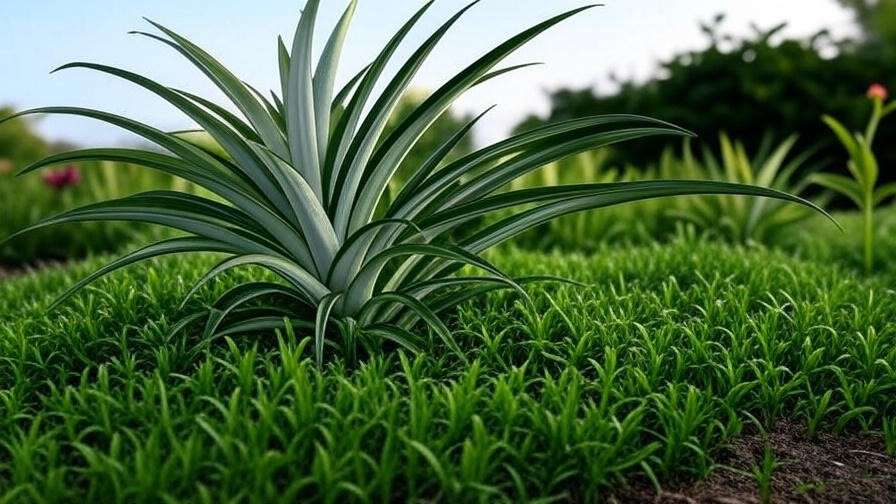
Frequently Asked Questions (FAQs) ❓
How long does it take for a watermelon pineapple plant to mature?
Maturity typically takes 1-2 years for full foliage development, with fruiting possible after 2-3 years under ideal conditions. Consistent care accelerates growth.
Can I grow watermelon pineapple plants indoors year-round?
Yes! Provide bright, indirect light or a grow light, maintain temperatures above 65°F (18°C), and ensure well-draining soil to mimic their natural habitat.
What should I do if my plant isn’t producing pups?
Lack of pups may indicate insufficient light or nutrients. Increase sunlight exposure and fertilize with a balanced formula to stimulate growth.
Are watermelon pineapple plants safe for pets?
They are generally non-toxic to cats and dogs, but their sharp leaves can cause minor irritation. Keep out of reach to avoid accidental injury.
How do I know if my plant is getting enough light?
Vibrant pink stripes indicate sufficient light. Fading colors or leggy growth suggest the need for more sunlight or a grow light adjustment.
Conclusion
The watermelon pineapple plant is a low-maintenance, visually striking addition to any tropical garden or indoor space. With its vibrant foliage and adaptability, it’s perfect for gardeners seeking beauty without complexity. By following this guide—covering planting, care, troubleshooting, and advanced tips—you’re equipped to cultivate a thriving plant that elevates your garden’s aesthetic. Start your watermelon pineapple journey today and share your success with our community using #TropicalGardenGoals! For more plant care insights, explore our articles on “Tropical Plant Care 101” or “Best Container Plants for Beginners” on our website. 🌿

